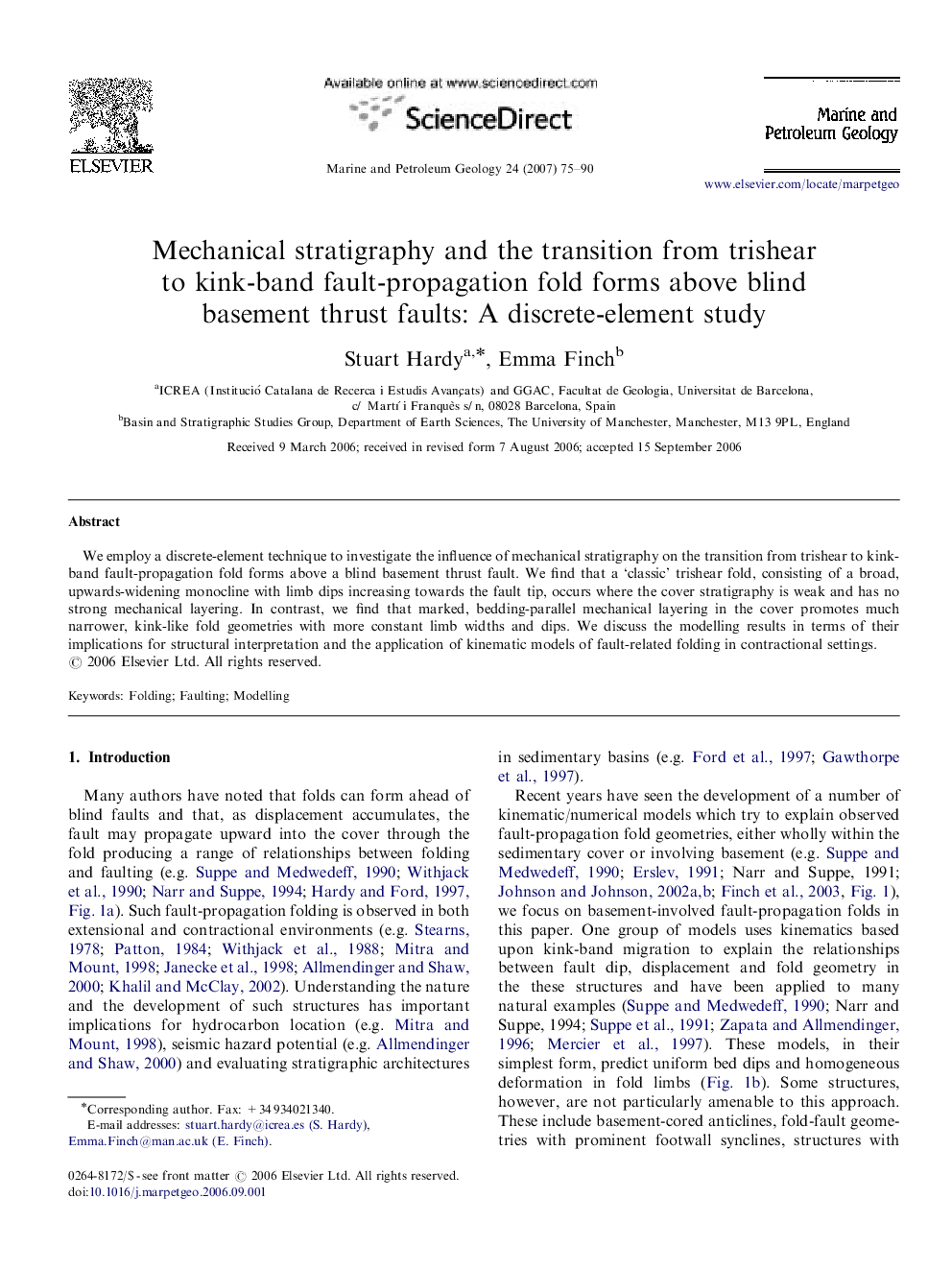| Article ID | Journal | Published Year | Pages | File Type |
|---|---|---|---|---|
| 4696718 | Marine and Petroleum Geology | 2007 | 16 Pages |
Abstract
We employ a discrete-element technique to investigate the influence of mechanical stratigraphy on the transition from trishear to kink-band fault-propagation fold forms above a blind basement thrust fault. We find that a 'classic' trishear fold, consisting of a broad, upwards-widening monocline with limb dips increasing towards the fault tip, occurs where the cover stratigraphy is weak and has no strong mechanical layering. In contrast, we find that marked, bedding-parallel mechanical layering in the cover promotes much narrower, kink-like fold geometries with more constant limb widths and dips. We discuss the modelling results in terms of their implications for structural interpretation and the application of kinematic models of fault-related folding in contractional settings.
Related Topics
Physical Sciences and Engineering
Earth and Planetary Sciences
Economic Geology
Authors
Stuart Hardy, Emma Finch,
